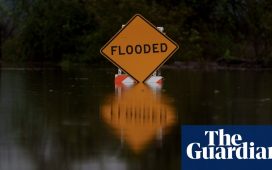But the problem isn’t uncertainty, exactly, or the fundamental unknowability of the underlying dynamics. We know with some amount of precision how weather conditions can affect the flammability of the landscape on a week-to-week basis.
“Actually, a lot of this information does exist and could be leveraged, but we’re not doing it,” Swain said. “And that I think is one of my great fears about climate change — climate adaptation or non-adaptation — is that a lot of these things are theoretically doable, but we’re not doing them. If we don’t really get a handle on it and start — start leveraging new information and thinking in a temporally dynamic way, in the context of things that are changing over time — that’s going to be a problem. It’s not even enough to say we’re in some new normal and then recalibrate our norms to what’s true today. We’re going to have to constantly be recalibrating.”
“Inevitably, our future holds a lot of fire,” Pyne wrote recently. His goal: “a variety of techniques for a variety of purposes,” he said, including an “urban fire” approach to those burning in the wildland-urban interface, where a much more aggressive firefighting and fire-prevention effort could be targeted. He mentions Indigenous practices, cultural burning and agricultural burning, alongside forest management through mechanical thinning and burning. “Thinning plus fire is what’s really effective,” he said. “In a lot of places, they get the thinning done, but they don’t do the burning. So in a sense, you haven’t solved the problem. You may even have made it worse in some ways, because now you’ve got all these jackpot piles, like gopher mounds all over the countryside, waiting for a fire.”
But Pyne is most focused on what he calls “working with wildfires”: a more open and fluid approach that treats those that begin with an accidental or natural ignition almost like prescribed burns by guiding them toward useful spread. “I wish the agencies were a little more forthright about this” — that some remote fires can just be left to burn, he said. “It’s legal, it’s legitimate. But it can also seem evasive, a little sub rosa,” especially against a backdrop of growing fire anxiety across the West, driven not just by the fires themselves but the smoke they produce. “People get hay fever in the spring,” Pyne said. “Well, you may be dealing with smoke fever in the fall.”
“We don’t have complete control,” he went on. “We don’t control the weather. We don’t control the mountains. But, he added, “We can decide where and when to set a fire, we can do some prior treatments at a certain level, but we can’t treat tens of millions of acres across the West — much less, a couple hundred million acres across the West before we put fire in.”
Ultimately, “I think prescribed burning has got to be a part of it, but it’s not going to be the dominant one,” he said, pointing out that in most years, acreage consumed by wildfire is much larger than what’s burned in prescribed fires and that in 2021, prescribed fires burned nearly 1.3 million acres in the Southeast, where climate conditions make such fires relatively safe, compared with less than 200,000 in the Southwest, West, Mountain West and Pacific Northwest each.


